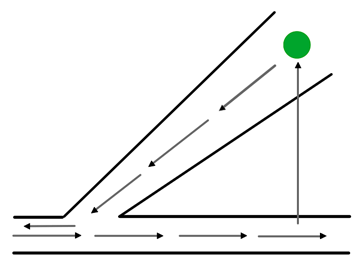


"Lateral Thinking is for changing concepts and perceptions" - With logic you start out with certain ingredients just as in playing chess you start out with given pieces. But what are those pieces? In most real life situations the pieces are not given, we just assume they are there. We assume certain perceptions, certain concepts and certain boundaries.
Lateral thinking is concerned not with playing with the existing pieces but with seeking to change those very pieces. Lateral thinking is concerned with the perception part of thinking. This is where we organize the external world into the pieces we can then process.
Creativity and innovation can power your business ahead of the competition. But how do you get creative? In this course you'll learn that creativity and innovation are deliberate, structured activities that can be learned and applied. When you master Dr. Edward de Bono's brilliant and proven techniques, you'll gain practical thinking skills that bring value to just about any aspect of your business.
Expected Results:
Focus your powers of creative thinking
Challenge current thinking with provocative questions
Spark new ideas with conceptual thinking and the technique of "random input"
Leverage creative ideas for real-world results
Go beyond deferring judgment to active movement
Turn provocative ideas into practical solutions
Understand the need for Lateral Thinking:
Learn the Lateral Thinking Modes
Shatter the myths around creative thinking
Realize the case for lateral thinking
Harness creative thinking to deliver results
Refine Creative Focus:
Shift the focus away from problems
Learn to redefine the focus on opportunities
Challenge Traditional Thinking:
Learn to break free of your traditional thinking patterns
Tap the power of unconventional ideas Identify Alternatives:
Learn the value of conceptual thinking
Use concepts to breed new ideas Capture the Energy of Random Input:
Use "random input" to create new connections

Lateral Thinking Techniques
Alternatives: How to use concepts as a breeding ground for new ideas. Sometimes we do not look beyond the obvious alternatives.
Focus: When and how to change the focus of your thinking. You will learn the discipline of defining your focus and sticking to it.
Challenge: Breaking free from the limits of traditional thinking. With challenges, we act as though the present way of doing things is not necessarily the best.
Random Entry: Using unconnected input to open up new lines of thinking.
Provocation and Movement: Generating provocative statements and using them to build new ideas.
Harvesting: Capturing your creative output. At the end of a creative-thinking session, we normally only take note of the specific ideas that seem practical and have obvious value.
Treatment & Assessment of Ideas: How to develop ideas and shape them to fit an organization or situation.
Training is conducted by a certified DBTS trainer, or master trainer.
For more information about this workshop download the Lateral Thinking Brochure![]()
For more information on cost and event booking, email RPLC

